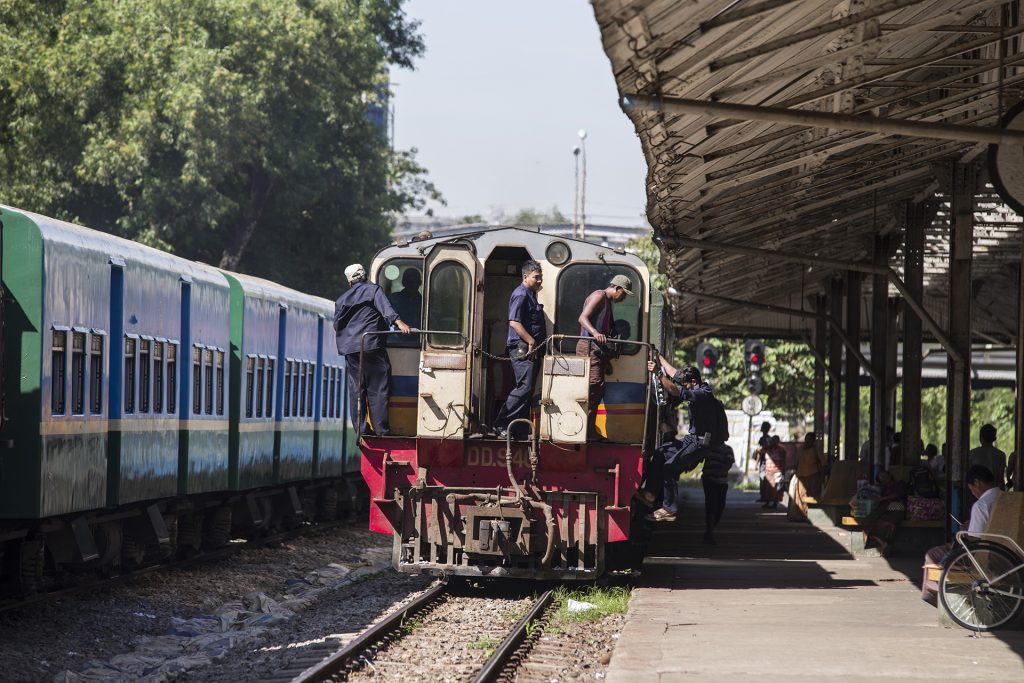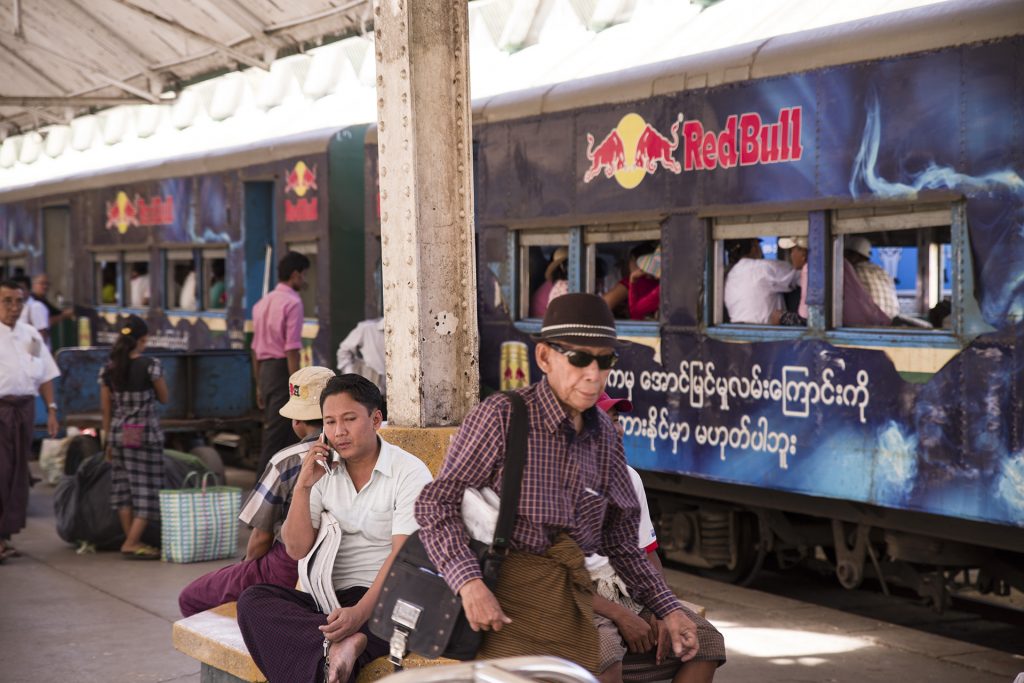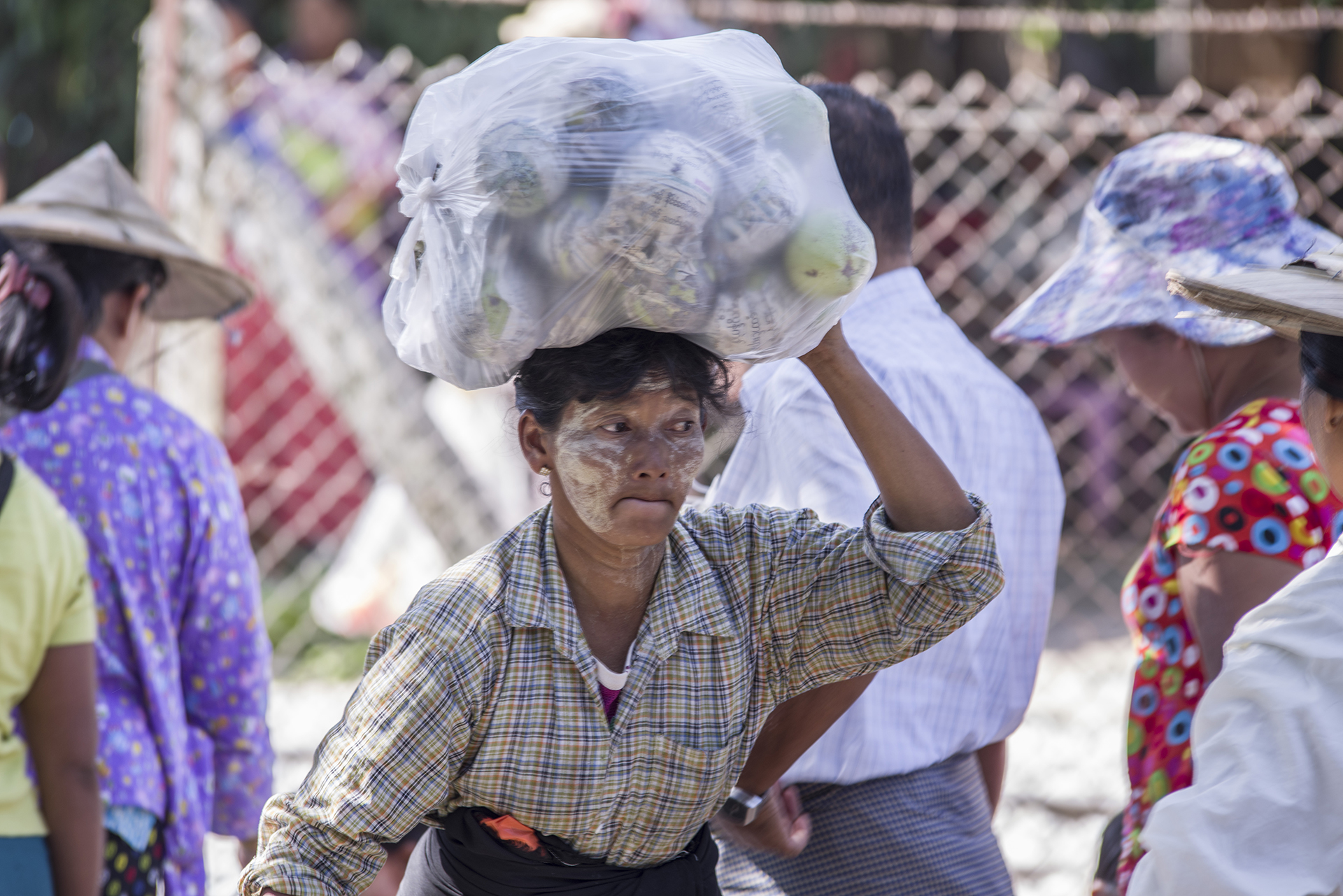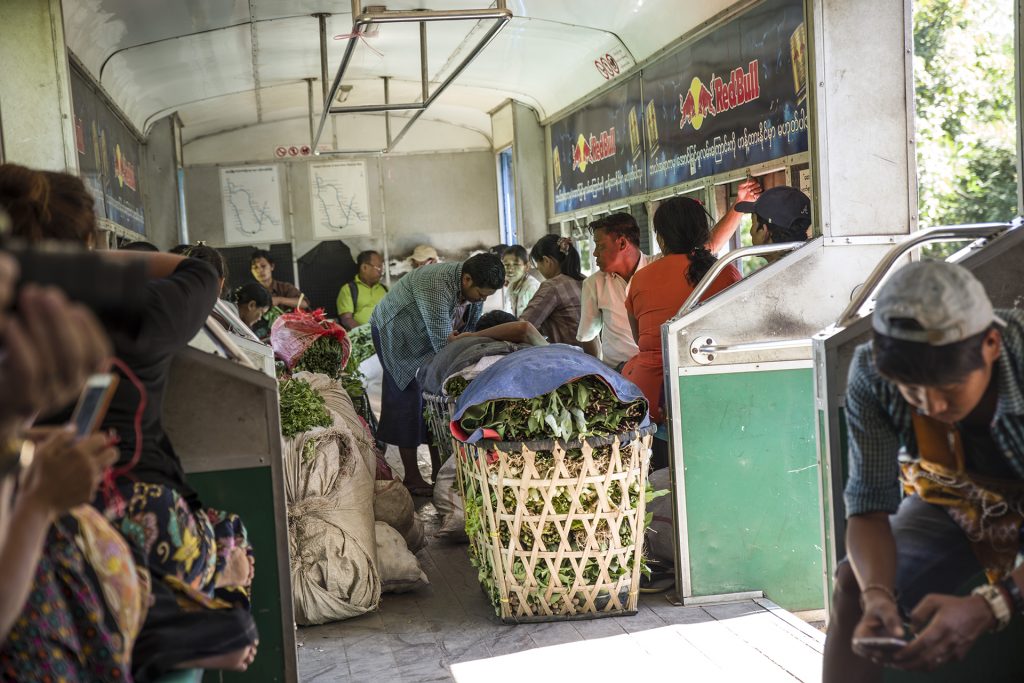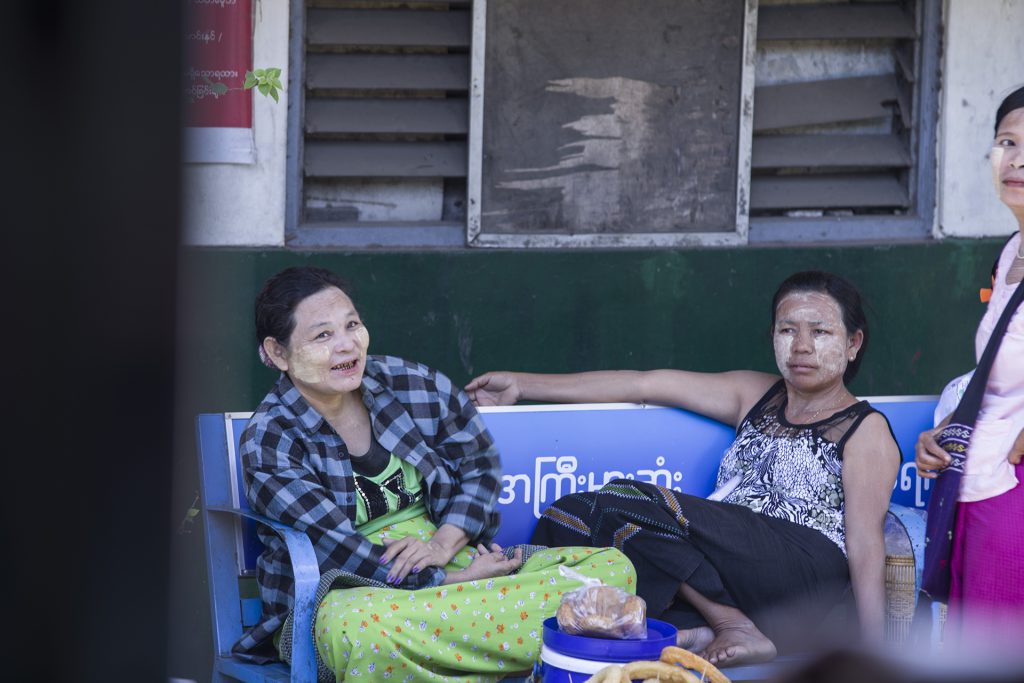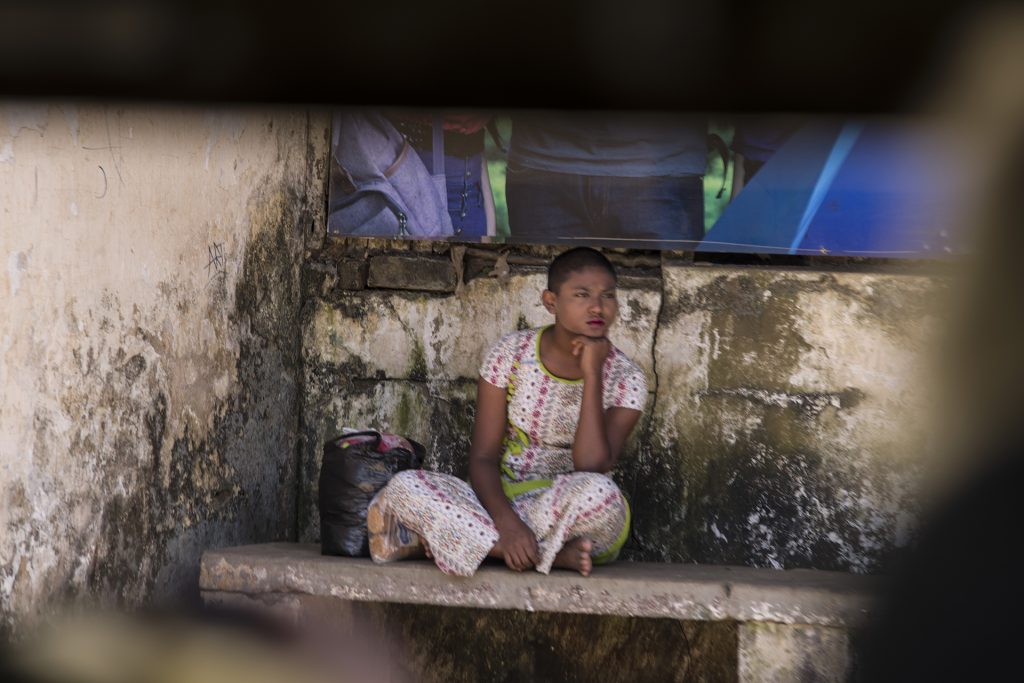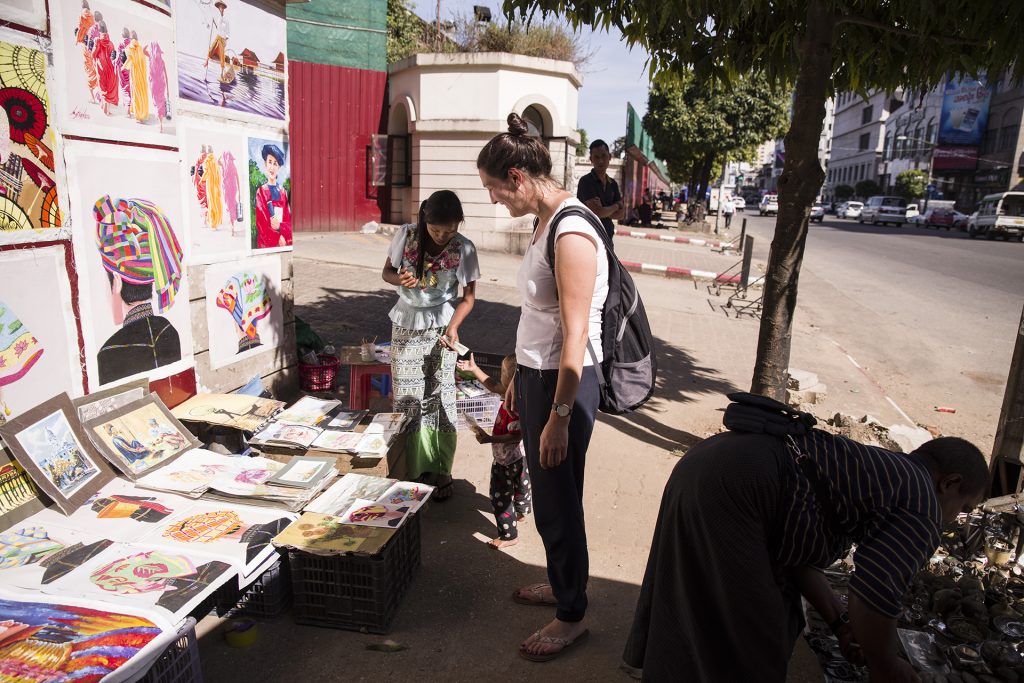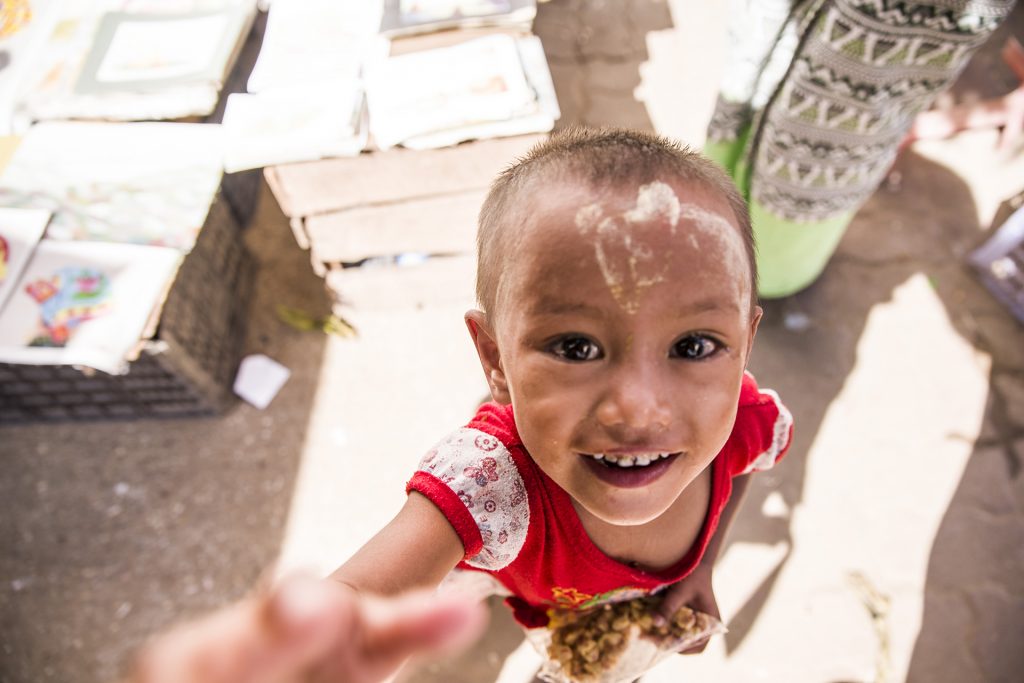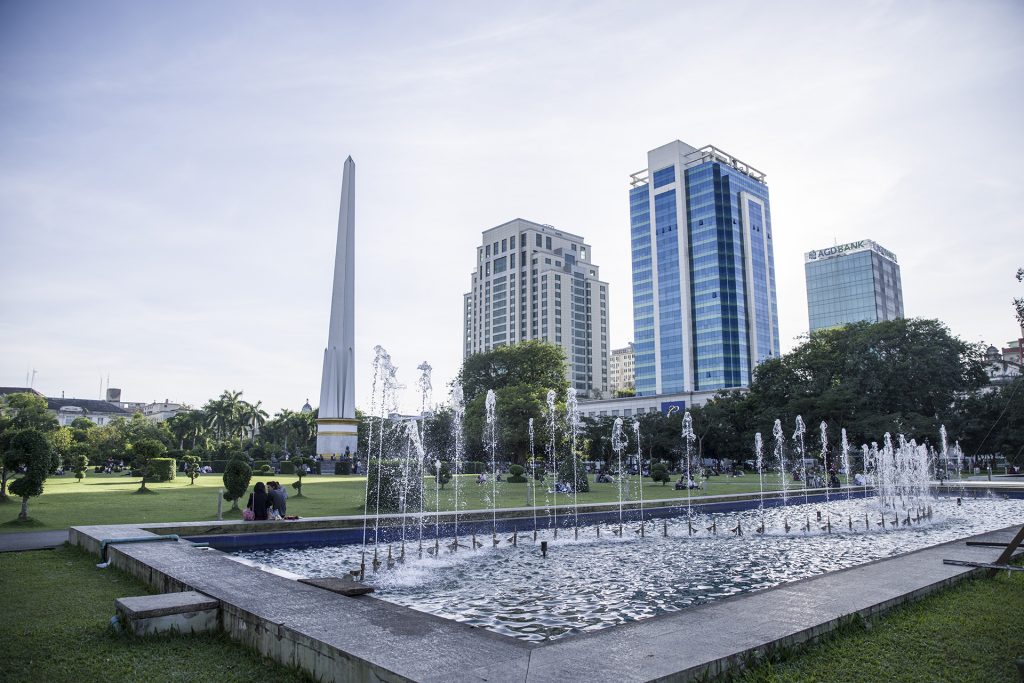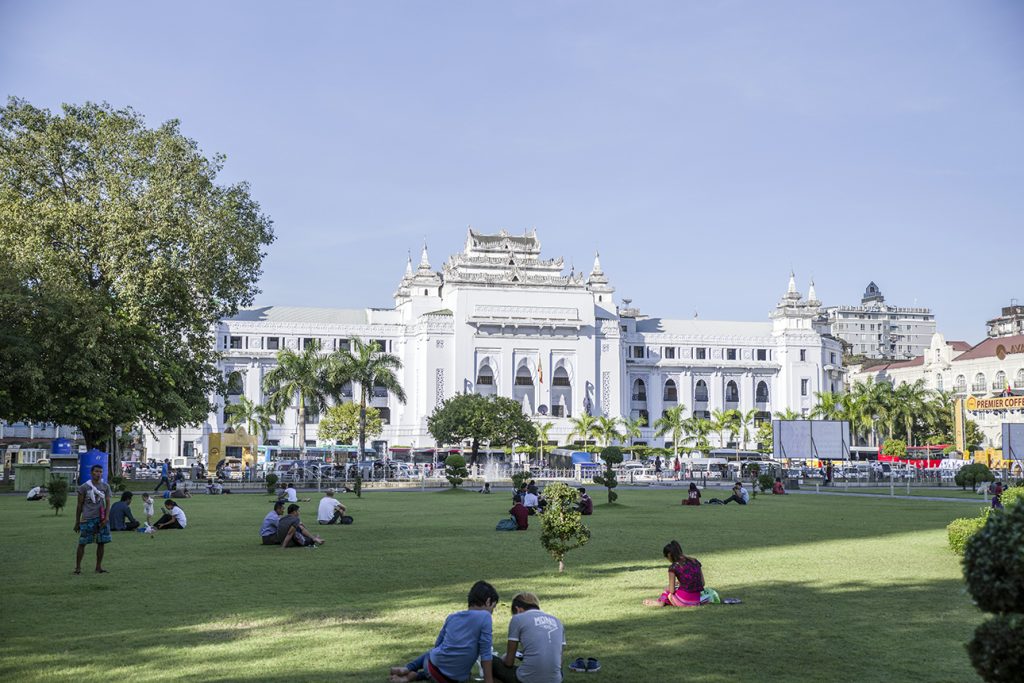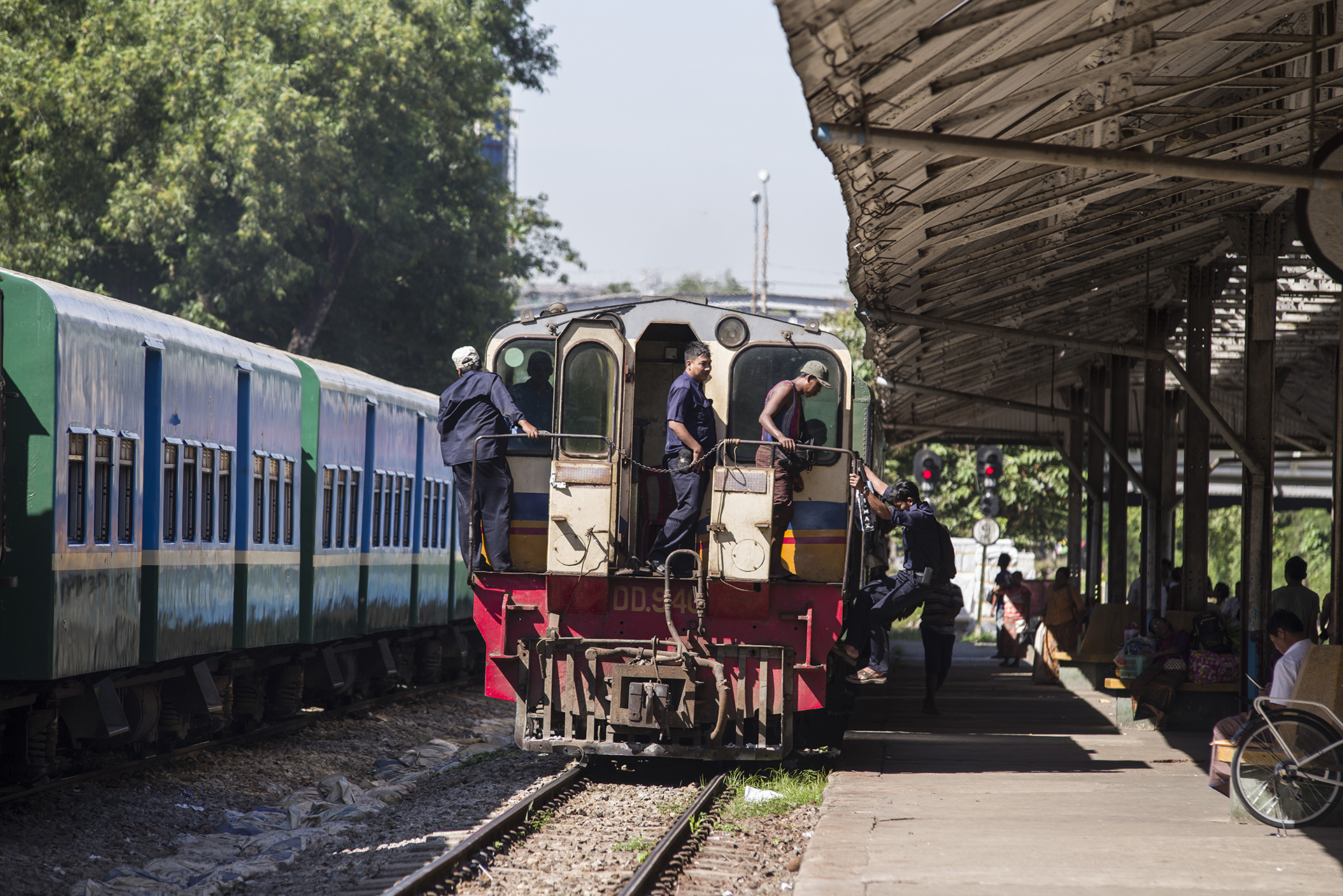
Yangons circular train
Today we want to do a whole lap around Yangon with the Circular Train. For 200 Kyiat, about one Euro we get a ticket with which you can, if you like, get off and on again at every stop. The train leaves about every 40–60 minutes and a complete city tour takes 3 hours. First we are taken by taxi to the Central Station, a huge, old colonial-style station building with very little English spoken. Fortunately, a nice railway official and a passer-by help us out. We have to walk to the front and cross the bridge on tracks 6 and 7 to get the ticket for the circular train. Shortly after us another tourist books the same tour. But since he obviously doesn’t speak English either, we get an advanced course in body language. First he holds 2 fingers in the air and then he paints a large circle with his index finger on the counter at the ticket counter. Without a further word, the man receives his two tickets for the city tour. I wouldn’t have thought of ordering tickets like that.
The trains that are standing here in the station have definitely had their best days. Besides the compilation of the scrap busses, I could also put the compilation of the locomtives and wagons that are not suitable for driving next to it. Already at the station a lot of flying traders await us who would like to sell their goods. From drinking water of doubtful sources to nail clips, everything is represented at the Central Station.
About 15 minutes later the train rolls in. Our wagon is painted blue and turquoise or better said was once painted blue and turquoise. Never mind, as long as the paint keeps the rusty pile together I’m happy. There are two wooden benches on the long sides and handles on the ceiling in the middle. This means there is plenty of space for goods that are of course transported in the train. Fortunately, we have air conditioning in the form of no windows. But there are nice aluminium blinds on the windows, which can be lowered if necessary. Then, of course, it would be pitch dark on the train.
Of course, it doesn’t take long before some market criers get in and loudly sell everything possible. Q‑tips for example I urgently need today. Otherwise there are mainly fruit, vegetables, quail eggs, normal eggs and beautiful oranges that smell unbelievably good. There seems to be a market at one stop. When we stop here there is a direct noise level like on a tarmac. Everyone screams and suddenly huge baskets of vegetables are loaded into our compartment. The next hour they then cleaned and sorted the vegetables calmly and very accurately. A real spectacle.
The stations are in a truly disastrous state. There’s dirt and garbage everywhere and more dirt. We drive past small lakes where vegetables are grown on floating gardens and I’m really no longer surprised that I can’t eat the raw vegetables here. The water is so incredibly dirty that you can hardly imagine anything growing here. The water quality in Myanmar is really the worst I have seen so far in all of Southeast Asia and as I said, I am actually totally insensible. We even drive past rivers that are completely filled to the brim with plastic. But what can you expect, the big companies come to a developing country, bring a lot of plastic and nobody tells people that it doesn’t rot like everything else and there is no waste collection or any central stations where it can be disposed of.
Between all the garbage we see the poorest dwellings that we have ever seen in all of Southeast Asia. Myanmar without make-up, so to speak. It’s unimaginable that people really live here. And I can’t explain to myself how you can live here without being permanently ill from bad drinking water. It is inconceivable to me anyway that there are countries that do not have regular access to clean drinking water. And once again I am simply grateful for my German passport.
In the outskirts of Yangon we see fields and a bright blue sky. But even here the people live only in small bamboo huts at the subsistence level. The three hours of driving fly by.
When we leave our train at Central Station after 3 hours we walk a few blocks to Bogyoke Market to spend some time there. Here there are mainly jewelry. The Myanmar people seem to be really into Jade and so you see one stand after another and I wonder again how they all can make a living from having so much competition. At a small street stand where you can buy pictures it doesn’t take long until Mirko and I have a new friend. The street stand owner’s little son is already in business. After about 2 seconds he has Mirko on hand and I wouldn’t have been surprised if he had already learned some English. He’s just too little for that.
And unfortunately I have to say that child labour simply exists on every corner in Myanmar. Every restaurant has at least one child under the age of 14 working here, but even though I don’t approve of that, it’s just normal. After all, most children only attend school here for a maximum of 4 years. In general, the poverty here is extremely noticeable and visible. There are just an incredible amount of street children begging for food or water and there are no really organised aid organisations here yet.
At a street stand around the corner we buy some fresh mandarins and mangustines. They taste like you pressed the aroma of 5 into a single fruit. Sometimes I wonder what kind of shit they actually sell us in Germany.
Afterwards we look for a cosy place in the park opposite the Cityhall and enjoy the afternoon atmosphere and of course the fresh fruits for a while. At 4 o’clock in the afternoon we meet with a guide to feast in the street kitchen of Yangon.
